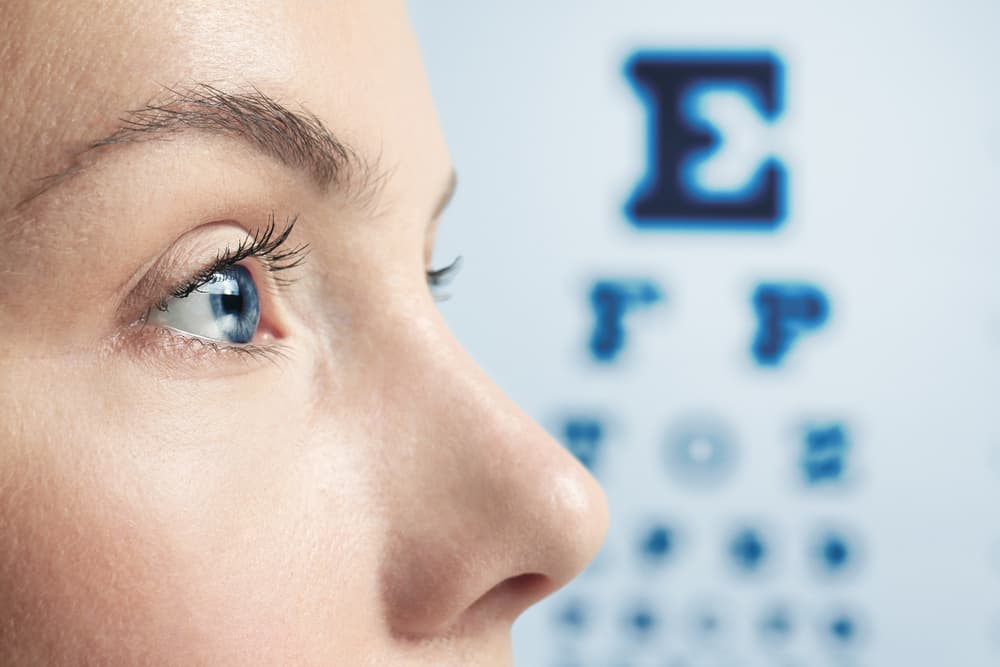Can Eye Exercises Improve Vision and Focus

Eye exercises have long been touted as a potential method for improving vision and focus. This article aims to explore the scientific basis behind eye exercises and examine their potential benefits.
Techniques for enhancing focus through eye exercises will be discussed, as well as strategies for incorporating these exercises into daily routines.
Additionally, common myths surrounding eye exercises will be debunked, and tips for maximizing their effectiveness will be provided.
Finally, the importance of consultation and professional guidance when engaging in eye exercise programs will be emphasized.
Key Takeaways
- Eye exercises have the potential to strengthen eye muscles and improve coordination.
- Limited empirical evidence supports the effectiveness of eye exercises, leading to skepticism.
- Corrective lenses and surgery are widely accepted as more reliable approaches for vision improvement.
- Some studies suggest that eye exercises may have a positive impact on convergence insufficiency.
The Science Behind Eye Exercises
The current scientific research explores the relationship between eye exercises and their potential effects on vision and focus.
Eye exercises have been a topic of controversy within the field of vision improvement. Proponents of eye exercises argue that they can strengthen the eye muscles, improve eye coordination, and enhance visual acuity. However, skeptics question the scientific validity of these claims and argue that there is limited empirical evidence supporting the effectiveness of eye exercises.
Alternative vision improvement methods, such as corrective lenses and surgery, have been widely accepted as more reliable approaches for treating visual impairments.
Despite the controversy surrounding eye exercises, some studies suggest that they may have a positive impact on certain visual conditions, such as convergence insufficiency.
Further research is needed to fully understand the potential benefits and limitations of eye exercises in improving vision and focus.
Benefits of Eye Exercises for Vision Improvement
This discussion aims to explore the scientific evidence supporting the effectiveness of eye exercises and the potential long-term vision benefits they may offer.
By examining the research conducted in this area, we can gain a deeper understanding of whether eye exercises truly have a positive impact on vision improvement.
Additionally, investigating the long-term benefits of these exercises can provide insight into their potential as a sustainable vision correction method.
Scientific Evidence Supporting
Scientific studies have provided evidence supporting the effectiveness of eye exercises in improving vision and focus. Eye exercises have been found to have a positive impact on cognitive function, enhancing attention, concentration, and memory. These exercises involve various techniques such as eye tracking, convergence, and focusing exercises, which can improve the coordination and strength of eye muscles.
Additionally, eye exercises have been shown to alleviate symptoms of digital eye strain, a condition caused by prolonged use of digital devices. Such exercises can help reduce eye fatigue, dryness, and discomfort associated with excessive screen time.
Furthermore, eye exercises have been found to improve visual acuity and enhance the flexibility of the eye lens. Overall, scientific research supports the use of eye exercises as an effective method to improve vision and alleviate eye-related issues.
Eye Exercises Effectiveness
Research has demonstrated the efficacy of ocular exercises in enhancing cognitive function, reducing symptoms of digital eye strain, and improving visual acuity. These exercises involve a series of eye movements and focusing techniques that aim to strengthen the eye muscles and improve overall visual performance.
However, there is some controversy surrounding the effectiveness of eye exercises in improving vision and focus. Critics argue that the benefits of these exercises may be limited and that alternative vision improvement methods, such as corrective lenses or surgery, may be more effective.
Despite the controversy, many individuals report positive outcomes from incorporating eye exercises into their daily routines. It is important for further research to be conducted to provide a more conclusive understanding of the true effectiveness of these exercises and to explore potential alternatives for vision improvement.
Long-Term Vision Benefits
Long-term benefits associated with ocular exercises include enhanced cognitive function, reduced symptoms of digital eye strain, and improved visual acuity.
Ocular exercises are a holistic approach to improving vision and focus, offering immediate effects that can be sustained over time. By engaging in regular eye exercises, individuals can strengthen the muscles responsible for focusing, thereby improving their ability to maintain clear vision for extended periods.
This enhanced cognitive function extends beyond just visual acuity, as the brain and eyes are intricately connected. Ocular exercises stimulate the brain and improve its ability to process visual information, leading to improved concentration, memory, and overall cognitive performance.
Additionally, these exercises help alleviate symptoms of digital eye strain caused by prolonged screen use, such as dryness, redness, and fatigue.
Overall, ocular exercises offer a comprehensive approach to improving vision and focus, providing both immediate relief and long-term benefits.
Techniques for Improving Focus Through Eye Exercises
To enhance focus, various techniques involving eye exercises have been explored and documented. These exercises aim to improve productivity and reduce the symptoms of digital eye strain caused by prolonged screen time. The following techniques have been found to be effective in enhancing focus:
- Palming: This exercise involves covering the eyes with the palms of the hands to create a dark environment, promoting relaxation and reducing eye strain.
- Near-Far Focus: Shifting focus between objects at different distances helps to exercise the eye muscles and improve their ability to switch focus quickly.
- Eye Rolling: Rotating the eyes in a clockwise and counterclockwise motion helps to relieve eye tension and increase blood flow to the ocular muscles.
- Blinking: Regularly blinking helps to lubricate the eyes, preventing dryness and improving focus.
Incorporating Eye Exercises Into Your Daily Routine
Incorporating eye exercises into one’s daily routine can be beneficial for both children and adults. These exercises not only help improve vision and focus but also promote overall eye health. For children, incorporating eye exercises can aid in the development of their visual skills, which are crucial for learning and academic success. Additionally, these exercises can help prevent or alleviate eye strain caused by excessive screen time.
For adults, integrating eye exercises into a work routine can help reduce eye fatigue and improve concentration. Spending long hours in front of screens can strain the eyes and lead to symptoms such as dryness, blurry vision, and headaches. By taking short breaks and performing eye exercises, individuals can relieve eye strain and maintain better focus throughout the day.
To further emphasize the importance of incorporating eye exercises, the following table summarizes the potential benefits:
| Benefits of Incorporating Eye Exercises |
|---|
| Improved vision and focus |
| Prevention of eye strain |
| Relief from symptoms of eye fatigue |
Common Myths About Eye Exercises Debunked
There is a growing interest in the effectiveness of eye exercises for improving vision and focus. This discussion will examine the scientific evidence supporting the use of eye exercises, exploring studies and research conducted in this area.
Additionally, the potential risks involved in practicing eye exercises will be considered, highlighting any adverse effects that have been reported.
Scientific Evidence Supporting
Scientific studies provide evidence that supports the effectiveness of eye exercises in improving vision and focus. These exercises have been the subject of controversial studies and are often considered as alternative vision therapies. The following points highlight the scientific evidence supporting the efficacy of eye exercises:
- Randomized controlled trials: Several well-designed studies have been conducted, comparing the outcomes of individuals who performed eye exercises versus those who did not. These trials consistently show improvements in visual acuity and the ability to focus.
- Neuroplasticity: Eye exercises are believed to harness the brain’s ability to reorganize and adapt, known as neuroplasticity. They target specific eye muscles and stimulate neural pathways, leading to improved vision and focus over time.
- Functional improvements: Research indicates that eye exercises can enhance functional outcomes, such as reading speed, eye-hand coordination, and visual processing speed.
- Long-term benefits: Studies have shown that the improvements gained from eye exercises can be maintained in the long term, suggesting their effectiveness as a sustainable vision enhancement strategy.
Eye Exercises Effectiveness
Studies have consistently demonstrated the positive impact of eye exercises on visual acuity and functional outcomes, suggesting their efficacy in enhancing visual performance. Several research studies have investigated the effects of eye exercises on various visual functions, such as accommodation, convergence, and visual tracking.
These exercises often involve repetitive eye movements or focusing tasks designed to improve eye coordination and strengthen the eye muscles. Proponents of eye exercises argue that they can alleviate symptoms of certain visual conditions, including eye strain, amblyopia, and convergence insufficiency.
However, the effectiveness of eye exercises remains a topic of controversy. Some studies have found significant improvements in visual function following eye exercise interventions, while others have reported minimal to no effect. The conflicting results may be attributed to variations in study design, participant characteristics, and outcome measures.
Further research is needed to determine the optimal protocols and effectiveness of eye exercises for different visual conditions.
Potential Risks Involved?
Potential risks associated with the practice of eye exercises should be carefully considered and thoroughly evaluated to ensure the safety and well-being of individuals engaging in these interventions. While eye exercises are generally considered safe and beneficial, there are a few potential dangers and safety concerns that should be taken into account:
- Incorrect technique: Performing eye exercises incorrectly may lead to eyestrain, discomfort, and even worsening of vision.
- Overexertion: Excessive or prolonged engagement in eye exercises can cause fatigue and eye strain, particularly if proper rest periods are not incorporated.
- Underlying eye conditions: Individuals with certain eye conditions, such as glaucoma or retinal detachment, may be at a higher risk of complications from eye exercises.
- Lack of professional guidance: Without proper guidance from a qualified eye care professional, individuals may unknowingly engage in exercises that are not suitable for their specific needs and may inadvertently worsen their condition.
Therefore, it is crucial to consult with an eye care professional and follow their advice to minimize the potential risks associated with eye exercises.
Tips for Maximizing the Effectiveness of Eye Exercises
To optimize the effectiveness of eye exercises, it is recommended to perform them consistently and follow proper technique guidelines. Maximizing results requires regular practice and adherence to specific guidelines.
Firstly, it is important to start with warm-up exercises to prepare the eyes for the main exercises. This can include blinking, focusing on distant objects, and gentle eye movements.
Additionally, it is crucial to avoid strain during eye exercises. This can be achieved by maintaining a relaxed posture, taking breaks when needed, and not pushing the eyes beyond their limits. Strain can be detrimental to the effectiveness of the exercises and may lead to discomfort or even injury.
Consultation and Professional Guidance for Eye Exercise Programs
Consultation with a qualified professional can provide valuable guidance and support in developing personalized eye exercise programs. When seeking professional guidance for eye exercises, individuals can benefit from the following:
- Assessment: A professional can conduct a comprehensive assessment of the individual’s vision and eye health to identify specific areas that need improvement.
- Customization: Based on the assessment results, a professional can tailor an eye exercise program to meet the individual’s unique needs and goals.
- Progress monitoring: Regular consultations with a professional allow for the monitoring of progress and adjustments to the exercise program as needed.
- Expert advice: Professionals can provide expert advice on additional strategies, such as lifestyle modifications and ergonomic adjustments, to maximize the effectiveness of the eye exercise program.
Frequently Asked Questions
Are Eye Exercises Only Effective for Improving Vision, or Can They Also Help With Focus and Concentration?
Eye exercises have been found to improve cognitive function and can be beneficial for children. While they primarily focus on improving vision, there is evidence to suggest that they may also help with focus and concentration.
Can Eye Exercises Completely Replace the Need for Glasses or Contact Lenses?
The effectiveness of eye exercises in completely replacing the need for glasses or contact lenses is uncertain. However, they may have a role in preventing eye diseases and can be considered as an alternative to corrective surgery.
Are There Any Age Restrictions or Limitations for Performing Eye Exercises?
The current question pertains to the potential age restrictions or limitations associated with performing eye exercises. Furthermore, it is important to examine the effectiveness of such exercises in relation to focus and concentration.
How Long Does It Typically Take to See Noticeable Improvements in Vision and Focus Through Eye Exercises?
The time frame for seeing noticeable improvements in vision and focus through eye exercises varies and is dependent on several factors. Furthermore, the effectiveness of eye exercises for focus and concentration, as well as their potential for replacing glasses or contacts, should be considered. Age restrictions, risks, and side effects should also be taken into account.
Are There Any Potential Risks or Side Effects Associated With Performing Eye Exercises Regularly?
Potential risks and side effects associated with regularly performing eye exercises have been investigated. Studies have explored the impact of these exercises on visual fatigue, eye strain, and discomfort, providing insights into the potential drawbacks of their regular practice.









